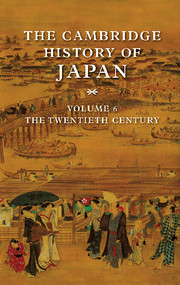7 - The Pacific War
from PART II - EXTERNAL RELATIONS
Published online by Cambridge University Press: 28 March 2008
Summary
HYPOTHETICAL ENEMIES
The general staffs of the Japanese armed forces, like those elsewhere in the world, devised contingency plans each year to cope with the possibility of hostilities against one or more powers. The Japanese army's war plans, reflecting emphases rather than strict numerical priorities, ascribed first importance to the Russians as the potential enemy from the time of the Russo-Japanese War until the birth of the Soviet Union. With the increase in American influence in the Far East attending a deterioration in U.S.-Japanese relations, the United States replaced Russia after 1918 as the main national enemy. The Japanese army was never as serious as the navy was concerning anti-American operations because hostilities did not appear imminent. Nevertheless, as early as 1918, Japanese war plans included an army-navy seizure of the Philippines to deny advanced bases to the United States Fleet in the western Pacific.
In the mid-1920s, civilian politicians pushed forward a program of reduction and budgetary retrenchment. Ugaki Kazushige, war minister between 1924 and 1927, feared that the lion's share of the limited national defense budget would go to the navy if the United States remained the prime national foe. To counteract this domestic pressure, the Japanese army began to draft new operational plans against the Soviet Union. In the late 1920s, however, the army general staff became more serious about the “northern threat.” The first Soviet five-year plan was begun in 1928, and the Red Army's offensive against Chang Hsueh-liang's forces in Manchuria in 1929 was unexpectedly successful.
- Type
- Chapter
- Information
- The Cambridge History of Japan , pp. 315 - 382Publisher: Cambridge University PressPrint publication year: 1989
References
- 2
- Cited by



